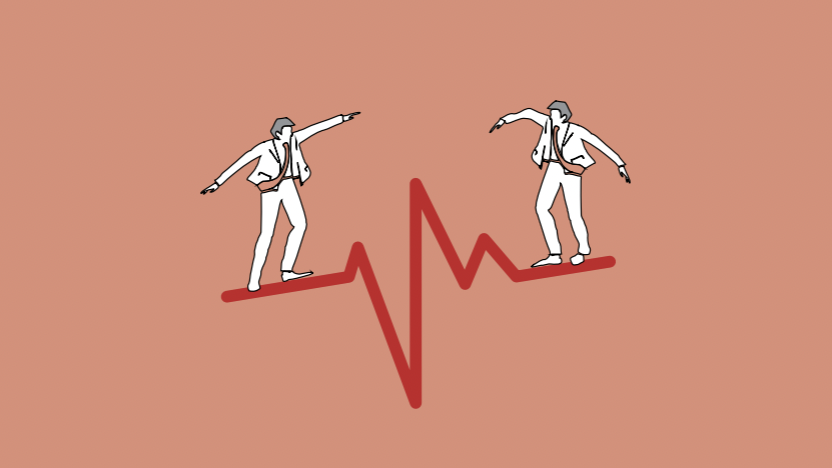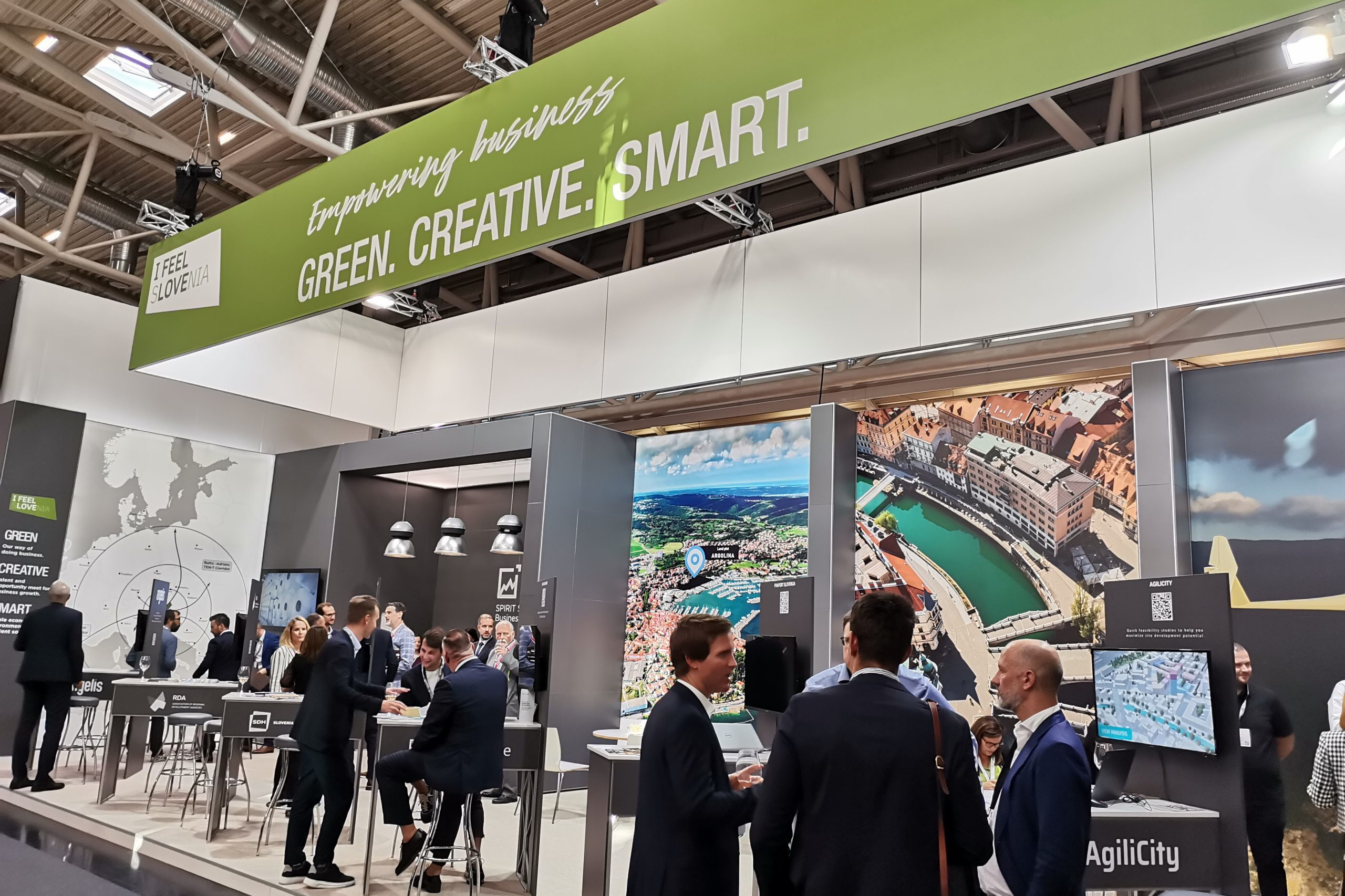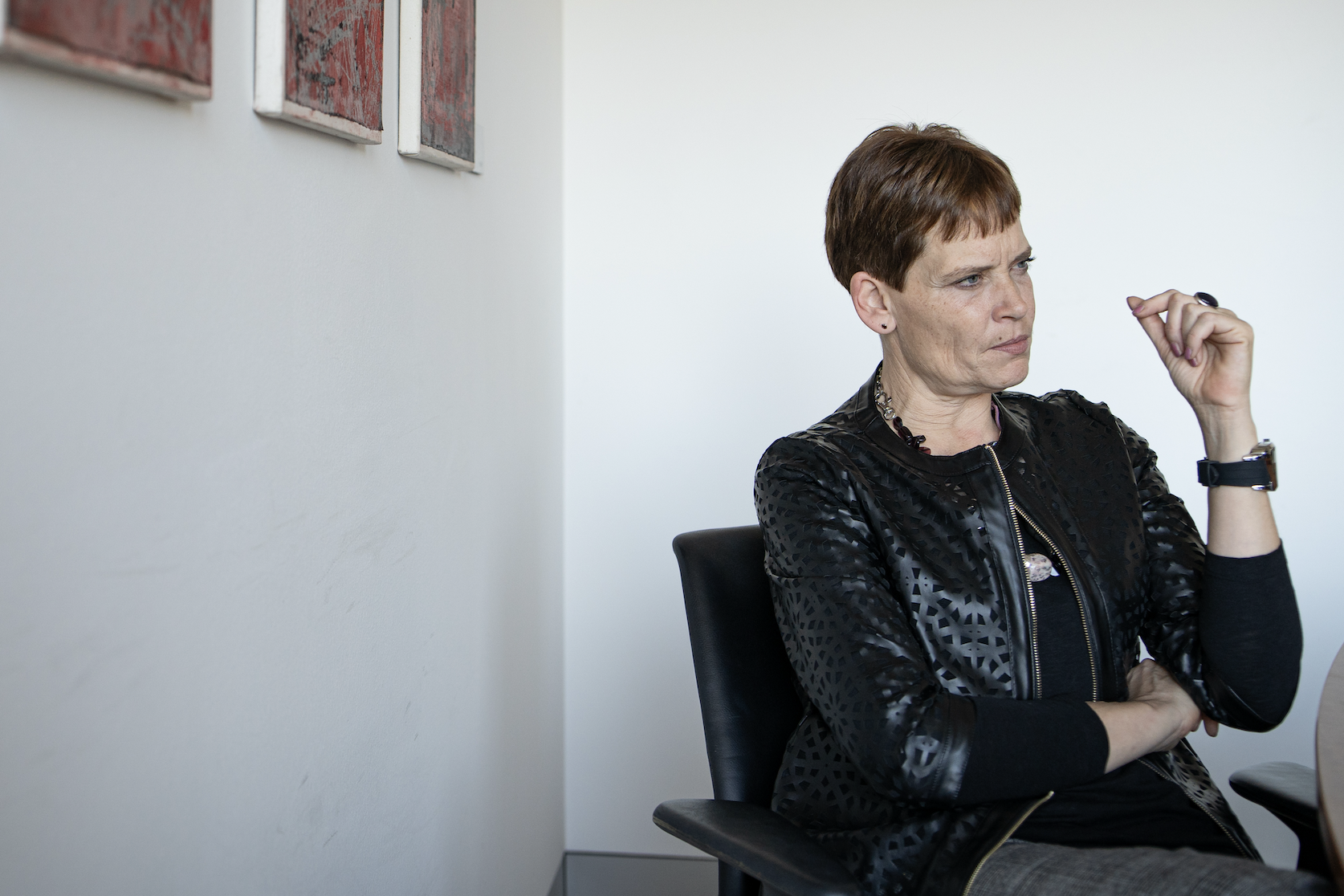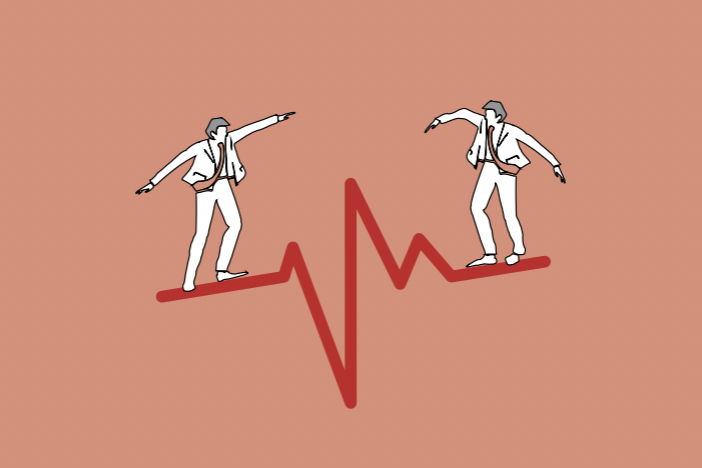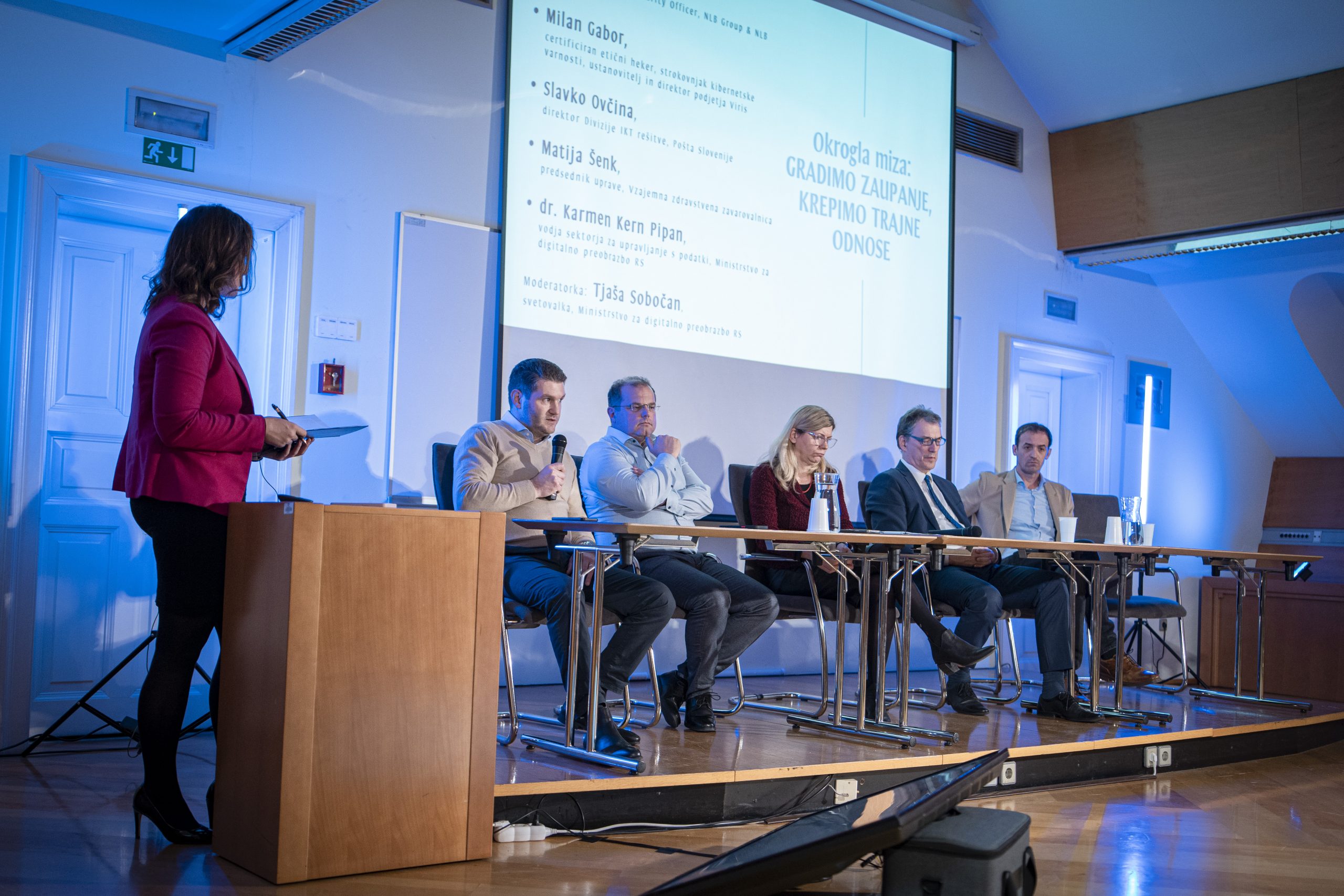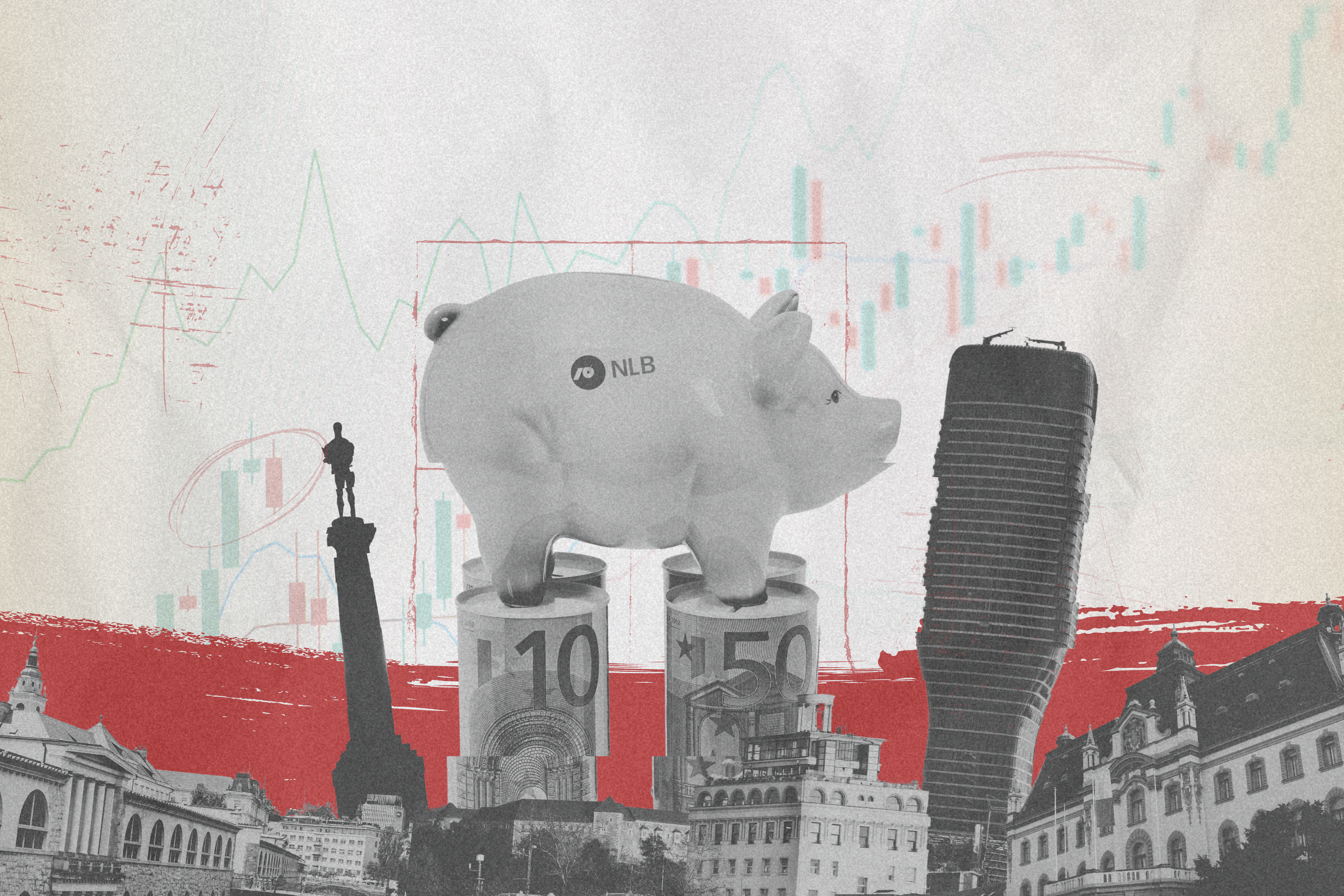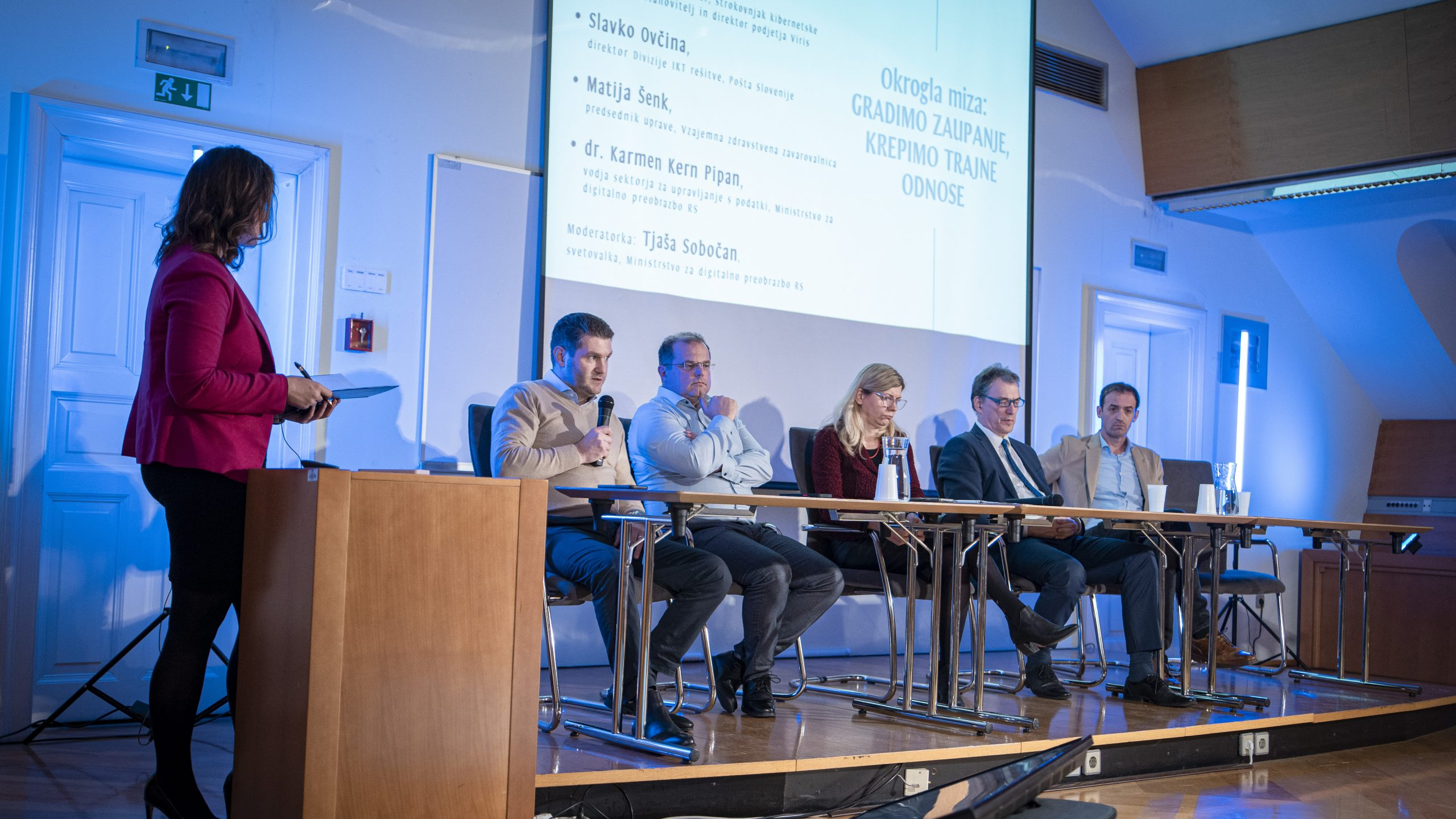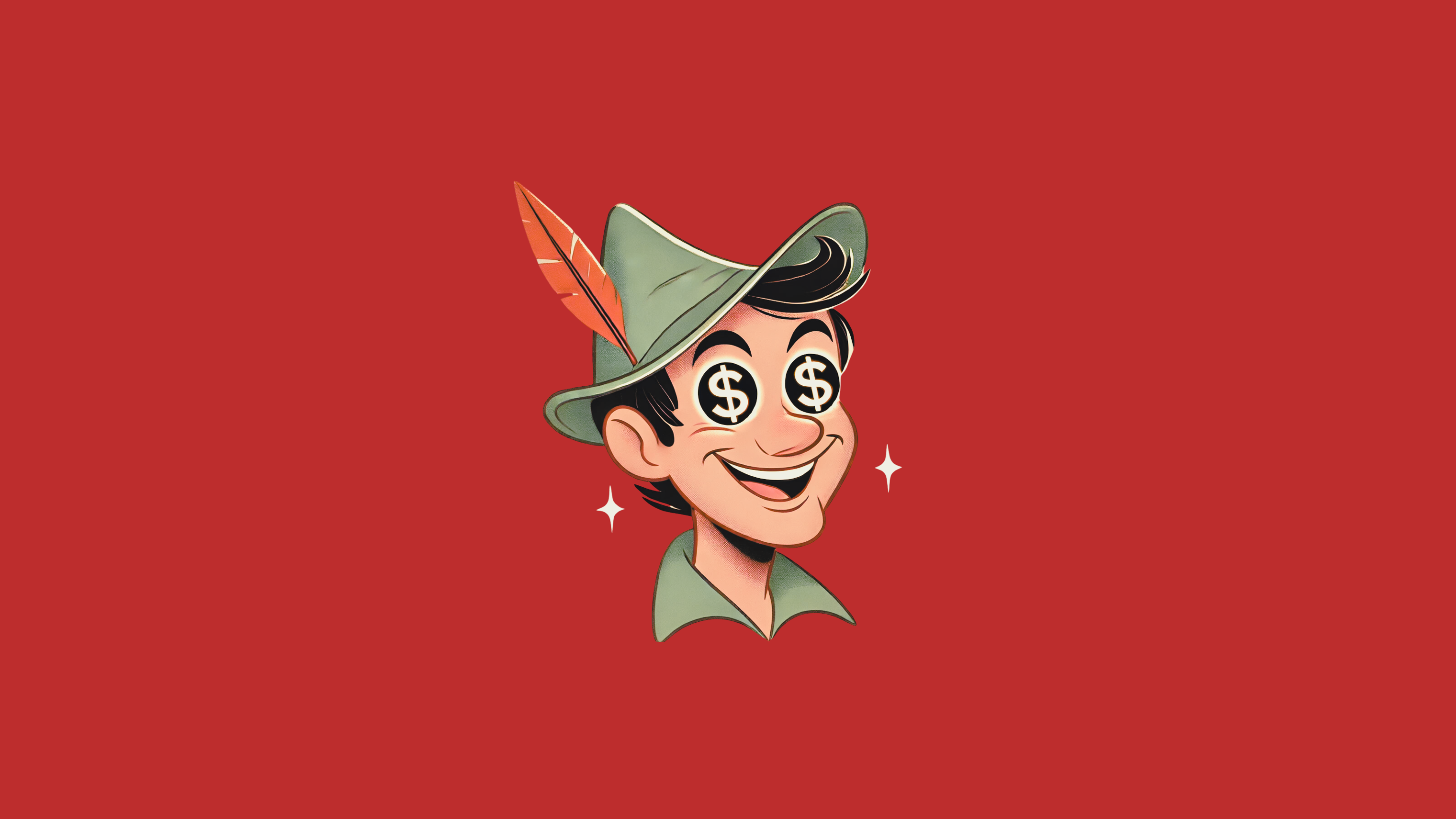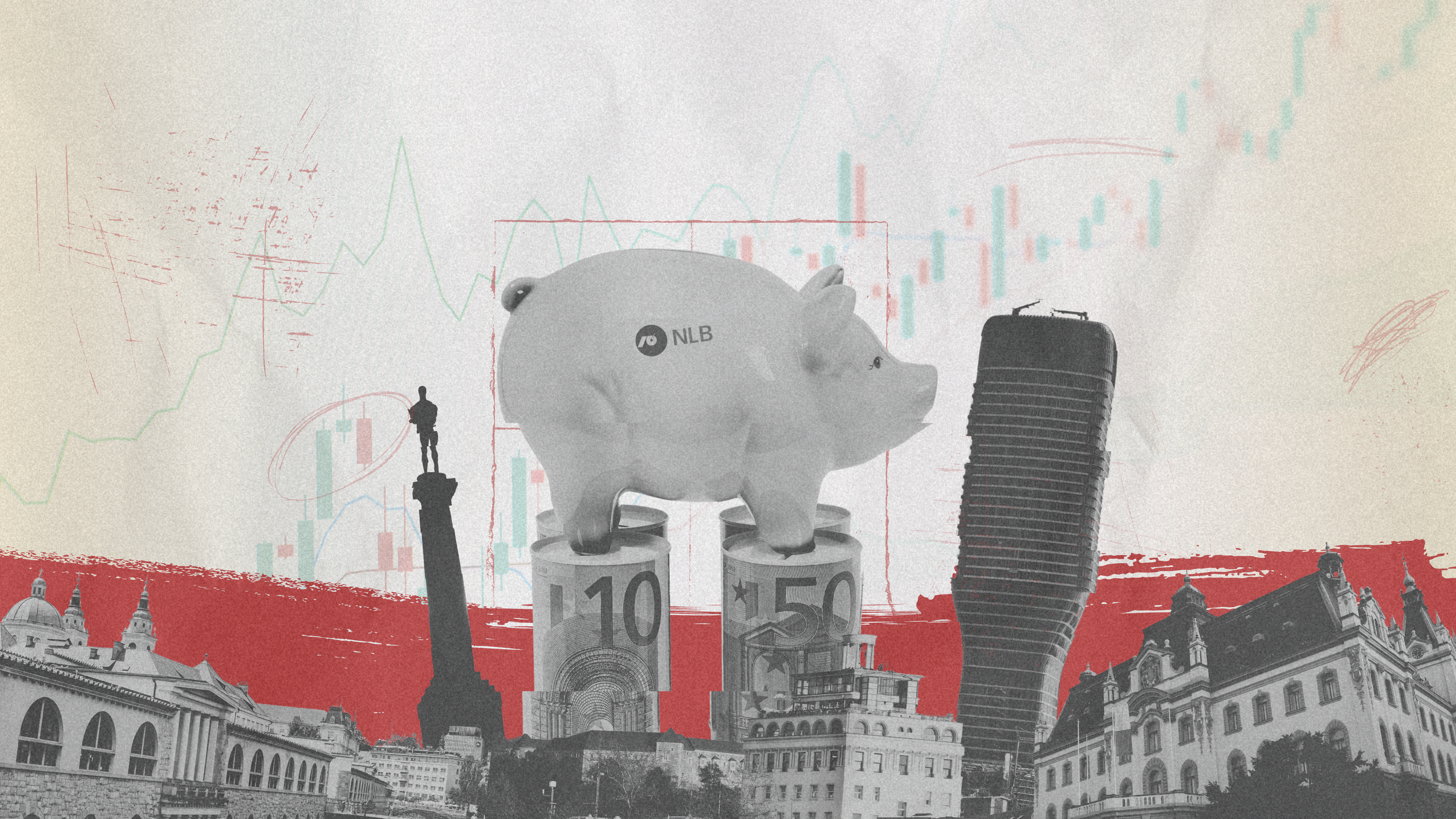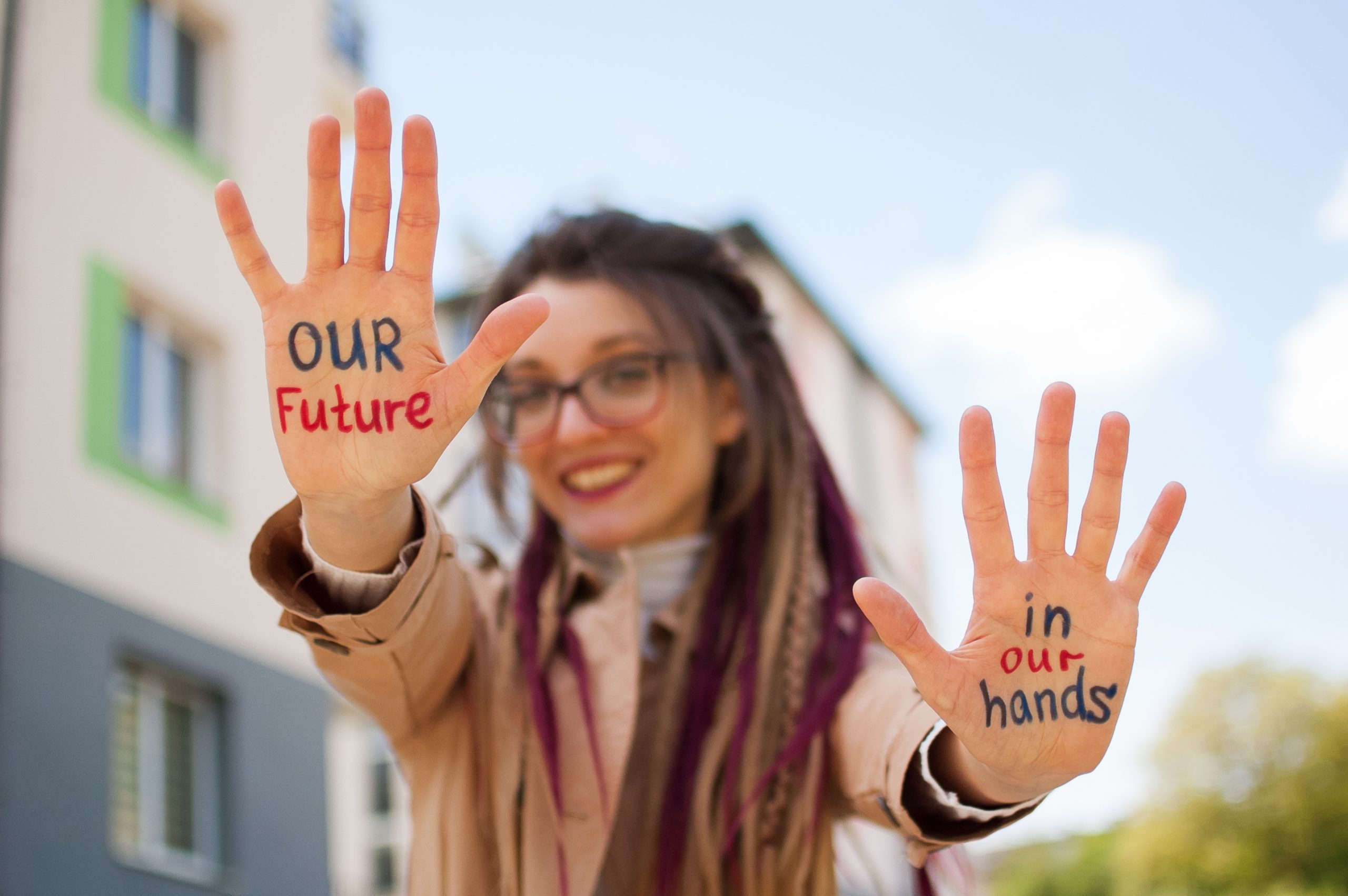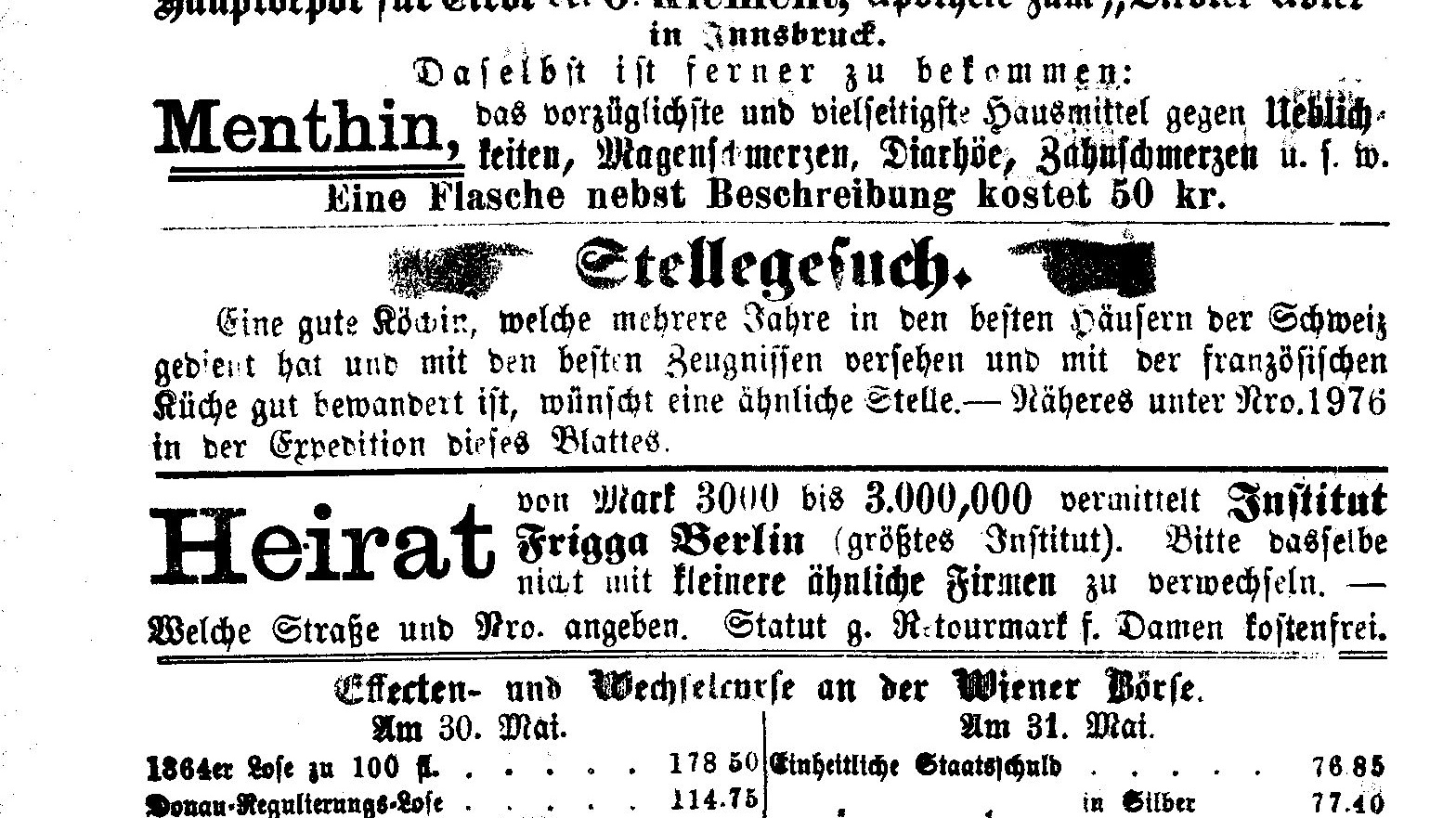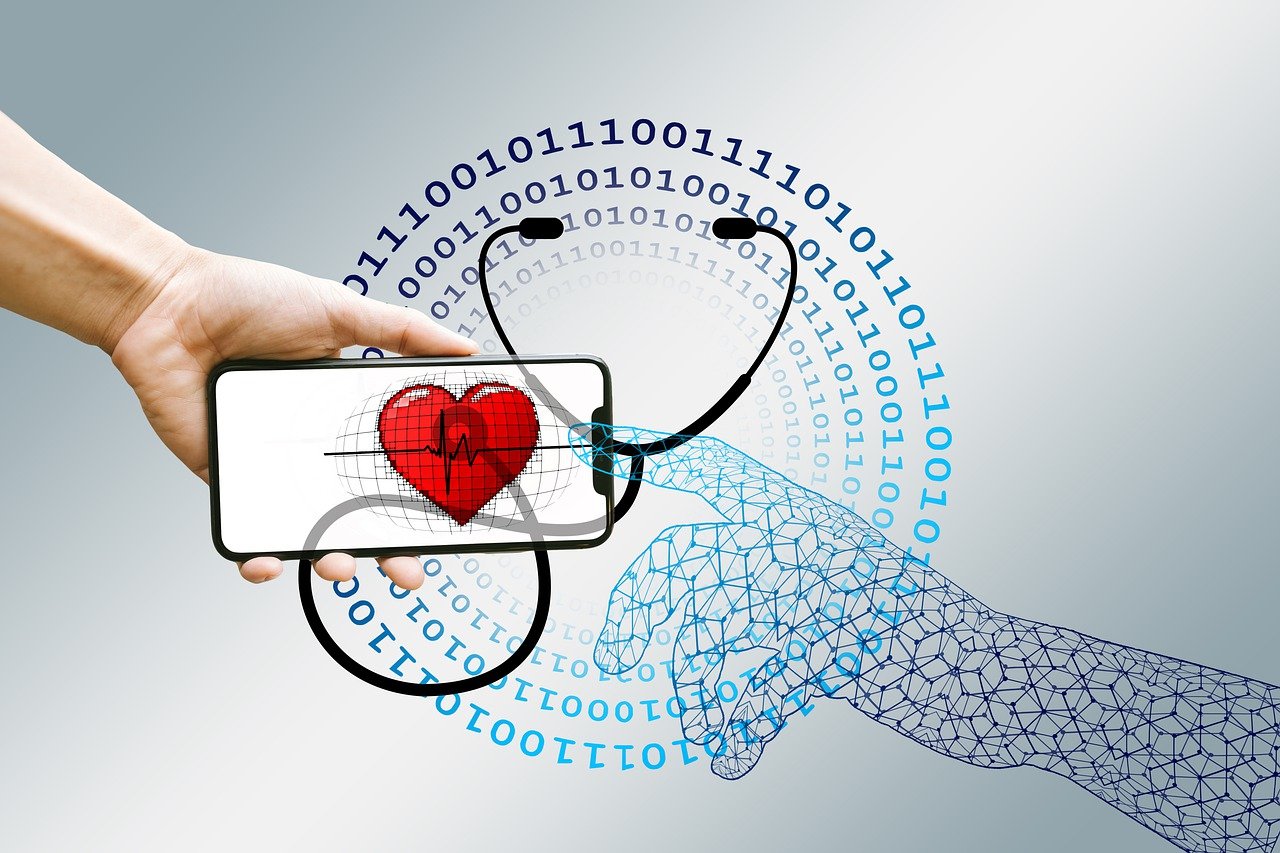Top risks in the Adriatic region in 2025
editor
The Western Balkans face significant demographic challenges characterised by declining birth rates and sustained emigration. Demographic patterns risk converging with those of Southern European countries, presenting important considerations for economic planning and social policy.
Dr Faris Kočan
Birth rates fall short of replacement threshold
One of the biggest challenges facing the Western Balkans today is a demographic crisis marked by low fertility rates and negative natural population balance. The region’s fertility rate averages just 1.5 children per woman – below the 2.1 required for demographic renewal – mirroring trends seen across much of Europe. This decline is compounded by a negative natural balance, where the number of deaths exceeds births, particularly in countries like Montenegro, North Macedonia, Serbia, and Bosnia and Herzegovina. This demographic shift has deep historical roots, beginning with the devastating impact of the 1990s conflicts, particularly in Bosnia and Herzegovina, which led to massive displacement and a lasting brain drain. Current economic conditions, characterised by stagnant growth and low per capita GDP, create additional barriers to family formation, with limited employment opportunities and weak social support systems discouraging young adults from starting families. The situation is further complicated by the high cost of housing relative to wages, inadequate family support policies, and continued emigration of young professionals seeking opportunities abroad, creating a self-reinforcing cycle that threatens to accelerate demographic decline through the 2030s.
Emigration threatens labour market
One of the most significant challenges facing the region is the ongoing demographic decline, driven by high levels of emigration. The situation is further compounded by negative net migration, with around 155,000 people leaving the region annually between 2012 and 2018, primarily for OECD countries. The six countries of the Western Balkans are experiencing these challenges to varying degrees. Bosnia and Herzegovina, for instance, has seen a steep population decline since the 1990s, compounded by the emigration of around 500,000 people over the past decade, which has left certain business sectors struggling to find workers. Serbia has similarly lost over half a million inhabitants since 2011, and projections indicate it could lose an additional 1.5 million people by 2050. Between 2011 and 2023, nearly all countries in the region experienced significant population decline: Montenegro (-0.3%), Albania (-3.9%), Serbia (-6.3%), and North Macedonia (-10.7%), with Bosnia and Herzegovina also showing a steep decline of 9.1% between 2011 and 2019. Kosovo is the only exception, with modest population growth during this period.
Region risks demographic, not economic, convergence with Southern EU
Western Balkans show increasingly divergent demographic profiles, with most countries’ age structures now approaching EU averages. Serbia leads the aging trend with a median age of 44 years, followed by Bosnia and Herzegovina (43), while North Macedonia and Montenegro both record median ages of 40. Only Kosovo (33) and Albania (39) maintain relatively younger populations, though this advantage is eroding. In 2023, the proportion of the population under 15 years old was notably low across the region – 14.3% in Serbia, 16.5% in Albania, 17% in North Macedonia, and 17.9% in Montenegro – far below Kosovo’s 24% in 2020. These figures suggest the region, excluding Kosovo, is tracking toward Southern European-style demographic challenges, particularly mirroring Portugal, Spain, Italy, and Greece. As these countries experience an ageing population, they will likely confront similar issues around living standards, healthcare, and social services, which will require urgent attention to sustain quality of life and economic growth.
Protecting the odds
editor
The Adriatic Team
Cyberattacks have become increasingly frequent lately, meaning companies must invest more in cybersecurity. According to the World Economic Forum (WEF), around 2,200 cyberattacks occur daily, with monthly damages estimated at $700 billion. Hacker methods are growing more sophisticated, and with the widespread adoption of artificial intelligence, attackers now have access to tools once thought unimaginable. Today, they can exploit technology that simulates the voice of a CEO or other executives. The most common targets of these attacks are financial gain and user data, which can later be used for extortion or sold on the dark web.
So far this year, the police have received around 1,600 attack reports, amounting to €25.5 million in damages – nearing last year’s total. Companies and organisations are becoming increasingly aware of the importance of data security. When the University of Maribor was attacked, one of the first questions raised was whether their data had been compromised and who had access to it, explains ethical hacker Milan Gabor. “We have two types of organisations: regulated ones, such as banks and insurance companies, which must ensure data security and have well-established systems for protecting data.”
Small and medium-sized enterprises, adds gabor, are also attractive targets due to their valuable data, but often have weaker protections. Gabor highlights the so-called rebound attack, where hackers target someone who collaborates with a large company or financial institution and has weaker security, thus gaining access to their data. This, in turn, provides hackers with easier access to the source code of large organisations.
Thorough reviews must be a constant
Gabor argues that vulnerabilities are compounded by the growing range of services developed by companies, which increase the likelihood of data theft. He emphasises that greater data accessibility also brings higher risks of attack, especially with the rapid development of new technologies. Therefore, it is crucial for companies to conduct regular, thorough reviews. Investment in infrastructure is key, and this is often driven by incidents. “When an attack happens and it hits the headlines, investment increases, but then it drops again until the next incident. That’s why companies must continuously invest in cybersecurity,” Gabor advises.
At the Slovenian Sports Lottery, which primarily organises sports betting, data is used for analysis, business optimisation, and strategic decision-making. Unstructured data is processed and transformed into valuable information, according to director of IT and technology, Jani Ravas. Contrary to popular belief, most data doesn’t come from football but from tennis, with up to 1.3 million data points per hour, he reveals. The risk with such data is that it could be breached, altered, and exploited for profit. As a result, the company handles data carefully and responsibly, ensuring secure processing, say Ravas. When it comes to personal data, player safety, privacy, and responsible usage are top priorities.
According to Ravas, users are increasingly aware of the importance of data security noting that younger people are less hesitant to share their data, while those over 30 tend to ask why certain information is needed. “Some users are extremely security-conscious, sending data in compressed files or passwords up to 15 characters long, showing that they really understand data security.” To protect this data, the Sports Lottery uses advanced security measures, including two-factor authentication, and collaborates with payment systems like Flik to ensure comprehensive protection. They encourage users to verify security codes, understand privacy policies, and be aware of their rights. The data is stored in various secure locations across the country.
New types of protection
Cybersecurity has become one of the key issues in the corporate world. “Passwords are the gateway to our digital identities and, consequently, a (trove of) vast amount of data. Microsoft and other major operators are moving increasingly toward digital credentials, which will allow us to verify our identity before accessing data,” Gabor explains, adding that the awareness process will be gradual. As users acquire new knowledge and digital skills, trust in institutions that hold our data – such as governments, banks, and healthcare organisations – will grow. This process will take time, and the government must take the lead. This will, in turn, increase overall security, according to Gabor.
While technology advances and threats evolve, the key question remains how users will assess the credibility of digital data and content. Gabor highlighted the dangerous discrepancy between the digital and real world and the often excessive trust in it. “Passwords lead to our digital identities and consequently to large amounts of data.” He added that the awareness process will unfold gradually and that the state must drive it forward.
Many companies are still seeking a balance between digitalisation and data security, but Športna Loterija represents an example of a successful approach to managing user data. “Our company receives very positive feedback, as players consistently express trust in our security policies and data management,” explained Jani Ravas, Director of IT and Technology. The company builds user trust on multiple pillars, from proactive security policies with regular security audits and certifications per international ISO 27001 and ISO 9001 standards to implementing advanced technological solutions such as data encryption and two-factor authentication.
Dual edge of data
editor
The Adriatic Team
Slovenia is amongst the leading countries in personal data management, yet its citizens still doubt data security. Experts and executives from Vzajemna Health Insurance, Pošta Slovenije, and NLB explained how data is managed and protected at a conference organised by the Institute for Strategic Solutions, moderated by ethical hacker and cybersecurity expert Milan Gabor.
Although Slovenia ranks among the top ten countries on the OECD Open Data Index, a Eurobarometer survey reveals growing public concerns about digital rights and data protection. Only 46% of Slovenians trust the EU to safeguard their digital rights, and 62% are concerned about online safety for young people.
Last week’s conference by the Institute for Strategic Solutions (ISR), titled In Data We Trust: Accept or Decline?, explored these challenges. Leading experts from the government, banking, insurance, postal, and healthcare sectors, under the guidance of certified ethical hacker and cybersecurity expert Milan Gabor, discussed the challenges of digital literacy, user experience, and cybersecurity in a roundtable session. Speakers exchanged best practices during the closing panel on how small and medium-sized enterprises can contribute to innovation in the Slovenian market through responsible data use.
“About a month ago, news broke of a hacking attack on the University of Maribor, and we regularly hear about attacks on critical infrastructure. These attacks are often a consequence of geopolitical events, resulting in an increasing sequence of cyberattacks,” were the opneing remarks by Tine Kračun, ISR Director. According to the World Economic Forum (WEF), approximately 2,200 cyberattacks occur daily, with monthly damages estimated at $700 billion. Despite these risks, data brings huge advantages — the key question is how to invest in it with trust while maintaining security.
“There are two narratives about data — there’s increasingly more of it, yet at the same time, less of it,” said Dr. Jure Stojan, partner and director of Development and Research at ISR. While the International Data Corporation (IDC) estimates that 180 zettabytes of new data will be generated this year, Stojan highlighted the critical issue of sustainability. “Statistics show that 38% of websites went offline in 2013, 31% in 2018, and this percentage dropped to 8% last year.” He pointed to the gap between social understanding and everyday practice: data often arises as a byproduct of our entertainment, information-seeking, and device usage, while regulations like European sustainability reporting standards, requiring 1,177 data points, demand intentional collection.
On one side, we have data quality, transparency, and usability; on the other, its security. “Maintaining trust with our policyholders is essential. Advanced cybersecurity, transparency, and communication—specifically which data we collect, why, and how we ensure its security—are critical,” emphasized Matija Šenk, CEO of Vzajemna Health Insurance, during a panel on data security. Similar challenges exist at Pošta Slovenije, which, according to Slavko Ovčina, Director of ICT Solutions Division, “began its digital service transformation years ago. Over the past year, we’ve launched numerous projects, which inevitably involve elements of information security. The recipient must be protected, and the sender must be credible.”
The challenge of maintaining trust is particularly significant in the public sector, while businesses may be a step ahead in digital operations due to earlier adoption of legislation, explained Dr. Karmen Kern Pipan from the Ministry of Digital Transformation. She noted that trust improved during the pandemic but that citizens still need to be encouraged to use state digital solutions through soft approaches.
Meanwhile, the financial sector focuses on education, explained Primož Vogrinec, Chief Information Officer for Security at NLB. “We invest heavily in user education because users are often the weakest link. While we can’t prevent attack attempts, we can limit their success.” However, the primary challenge lies in users’ varying levels of prior knowledge and access to different technologies, added Matija Šenk.
These concerns are justified, as police data shows 1,600 reported cyberattacks this year, causing €25.5 million in damages. “Banks and insurance companies, which must ensure data security, have well-established systems for data protection. Small and medium-sized enterprises often do not,” warned cybersecurity expert Milan Gabor. He emphasized that greater data accessibility brings higher risks of attacks, especially with the rapid development of new technologies. “Hackers quickly adapt and assimilate their technologies; for example, they use artificial intelligence for increasingly sophisticated phishing attacks.”
In response to these challenges, the government is strengthening digital literacy infrastructure. “When technology is needed, it’s important to have it at hand,” emphasized Dr. Kern Pipan, explaining that 162 digital info points have been established across Slovenia, providing citizens with direct support in using digital services. According to Slavko Ovčina, a systemic approach to digital literacy is the long-term solution: “Digital literacy should be introduced in schools. It’s about how children share information—something we weren’t exposed to in the past, but today, everything is published.”
While technology advances and threats evolve, the key question remains how users will assess the credibility of digital data and content. Gabor highlighted the dangerous discrepancy between the digital and real world and the often excessive trust in it. “Passwords lead to our digital identities and consequently to large amounts of data.” He added that the awareness process will unfold gradually and that the state must drive it forward.
Many companies are still seeking a balance between digitalisation and data security, but Športna Loterija represents an example of a successful approach to managing user data. “Our company receives very positive feedback, as players consistently express trust in our security policies and data management,” explained Jani Ravas, Director of IT and Technology. The company builds user trust on multiple pillars, from proactive security policies with regular security audits and certifications per international ISO 27001 and ISO 9001 standards to implementing advanced technological solutions such as data encryption and two-factor authentication.
Insurance fraud is no "Robin Hood" crime
editor
The Adriatic Team
Far from stealing from the rich, insurance cheats pick the pockets of ordinary policyholders, costing the Slovenian market up to €200 million a year.
“Why do fraudsters do it? Because they can.” With these stark words, Maja Krumberger, director of the Slovenian Insurance Association, opened the inaugural international conference on fraud prevention at Bled. The two-day event convened leading experts from insurance, justice, law enforcement, and data analytics sectors to confront a growing global crisis.
In an industry generating more than a trillion dollars globally, fraudsters syphon off over $40 billion annually, according to the FBI. Far from being a victimless crime, this has evolved into a shadow tax on honest citizens, costing the average American family between $400 and $700 yearly in inflated premiums. Even in Slovenia, a country of just two million people, the annual toll reaches €200 million.
The problem is particularly acute in the United Kingdom, where Thomas Hill, head of the London Police’s insurance fraud prosecution department, reports an 8% surge in fraud cases over the past year. £1,9 billion in reported losses for 2023/24, with fraudulent insurance claims accounting for £1,1 billion across 84,470 cases.
One recent case exemplifies the industry’s challenges. Gary Whipps, a broker who specialised in amusement park insurance, orchestrated a simple yet effective scheme: altering premium amounts on contracts, pocketing the difference, and leaving 26 clients with compromised coverage. His conviction in June brought a two-year prison sentence, but the story highlights the gap between criminal conviction and financial restitution.
“We all pay premiums due to fraud,” notes Jernej Veberič from Triglav Insurance’s fraud prevention unit. Despite laws threatening up to ten years’ imprisonment, he argues the real challenge lies not in penalty severity but in prosecution effectiveness. The complexity of proving fraud, combined with lengthy legal procedures, has made early detection crucial.
Hope for progress lies in enhanced investigative capabilities. Marcus Lindemann, who trains journalists and investigators in Open Source Intelligence (OSINT), demonstrated how publicly available personal data can strengthen fraud detection. “Sensitive personal information that was previously only found on the dark web can now be accessed through the clear net,” Lindemann explained, referring to freely available internet services. Moving to the next slide, he displayed Mark Zuckerberg’s personal data, including over 15 phone numbers and 16 email addresses.
Coupled with tools that utilise AI, fraud detection is improving fast. The Slovenian Insurance Association recently celebrated a milestone in this direction with its FRODO data analytics system. Developed by MEDIUS d.o.o., winning the best digital project of 2024 at the GoDigital conference at Brdo pri Kranju, this AI-powered solution helps member insurance companies detect suspicious claims.
But technology alone won’t solve this crisis. The real solution requires something more fundamental – understanding that each fraudulent claim isn’t just a victimless crime against a faceless corporation. It’s a hand reaching directly into the pockets of every policyholder, taking money that could have protected someone’s home, health, or future.
Slovenia's NLB Skladi brushes off recession fears as it expands Balkan presence
editor
Andraž Tavčar
As central bankers across Europe grapple with the aftermath of monetary tightening, Slovenia’s largest asset manager is quietly building an investment empire in the Balkans, brushing aside recession fears with a boldness that has become its hallmark.
NLB Skladi, celebrating its 20th anniversary this year, has emerged as the standard-bearer for financial innovation in Southeastern Europe. Commanding a formidable 40 percent of Slovenia’s mutual fund market, the fund has been systematically acquiring regional rivals whilst championing alternative investments in a market traditionally wary of financial sophistication.
In May, it acquired Generali’s Macedonian operation, promptly rebranding it as NLB Fondovi Skopje. Barely four months later, it had planted its flag in Serbia through the acquisition of Kombank Invest.
“At NLB Group, we believe in the development of investment products in Southeastern Europe,” explains Luka Podlogar, chief executive of NLB Skladi, whose measured words belie the scale of his ambition, as the firm plans to harness its extensive branch network to distribute sophisticated investment products across the region.
While many houses maintain alternative assets at the periphery of their offerings, Podlogar positions them as cornerstone investments, particularly for investors looking to move beyond conventional asset allocation. “At NLB Skladi, we firmly believe that alternative investment funds offer exceptional opportunities for investors seeking higher returns, greater diversification, and protection from the volatility of traditional capital markets,” he explains, outlining a strategy that looks beyond traditional market correlations.
His approach rests on what he sees as a fundamental market challenge: the search for investments that deliver both stability and growth. “Alternative funds provide precisely this—access to asset classes such as real estate, private equity and infrastructure that exhibit lower correlation with traditional capital markets.”
Longterm, the firm anticipates alternatives playing an increasingly crucial role in both portfolio stability and wealth creation. For now, though, its traditional investment business is flourishing; €189.5m in net inflows over nine months, but it is perhaps the retention figures that prove most telling. A 44.4% share of gross inflows would satisfy most managers; the higher net figure of 52.3% points to something more significant—an ability not just to attract capital, but to keep it.
Supporting this success is an optimistic market outlook. They see neither the spectre of deep recession nor any significant deterioration in employment levels on the horizon. More notably, their analysts expect inflation to retreat further from late-2023 peaks. Rok Potočnik, senior portfolio manager, offers a remarkably sanguine view of global prospects, as the spectre of recession that has haunted market sentiment is likely to prove chimeric. “We believe that the year will be positive for both asset classes, but even more so for stocks than for bonds,” he says, whilst tempering enthusiasm about a repeat of last year’s exceptional returns.
The firm’s conviction extends beyond mere outlook, instead pointing to a confluence of supportive factors: stable employment, inflation edging towards target levels, and modest but sustained economic growth. Robust corporate earnings growth, coupled with anticipated monetary easing by major central banks, they argue, should continue to underpin equity valuations. Potočnik translates this into practice: “We maintain an above-average exposure to equities relative to bonds, whilst favouring both asset classes over cash positions.”
This confident stance is reflected in NLB Skladi’s investment portfolio, which warrants a closer look. They maintain a bullish stance on artificial intelligence infrastructure, though the sector’s true revolution—in software solutions—remains unrealised. Perhaps more striking is their stance on healthcare equities, a sector many investors have dismissed as post-pandemic deadwood. The prospect of lower interest rates could spark a wave of consolidation in an industry ripe for merger activity, whilst artificial intelligence promises to streamline the notoriously costly drug development process. The moderation in wage pressures offers particular promise for American healthcare providers, where staffing costs have traditionally eaten into margins.
Yet it is their view on Chinese markets that best illustrates the firm’s thinking. Beijing’s recent announcement of robust measures to reinvigorate its economy has caught their attention. “Should these initiatives gain traction in the real economy, equity prices could respond accordingly,” notes Potočnik. “Current valuations,” he adds, “make the proposition particularly interesting.”
Twenty years after its founding, NLB Skladi presents an interesting case study in market evolution. Whilst its dominance in Slovenia might suggest natural limits to growth, recent moves indicate rather broader horizons. That it continues to attract significant capital suggests its thesis for southeastern European market development resonates with sophisticated investors. The true test, of course, lies ahead. Its combination of regional expansion and investment innovation will be tested by the same economic headwinds that have challenged more established European houses. For now, however, Slovenia’s largest asset manager appears to be writing a rather different playbook.
Climate voices of the future
editor
Tibor Remškar
The Western Balkans, a region steeped in rich history and diverse cultures, is currently facing a new and formidable challenge: climate change. This emerging global warming hotspot, however, is witnessing an inspiring counter movement led by its young, passionate activists. According to the United Nations Development Programme, nearly 70% of these young people recognise climate change as a critical global issue, actively advocating for and demanding substantial climate action.
The accessibility of education and information, particularly through social media, has played a pivotal role in nurturing a generation that is not only more informed about climate issues but also deeply concerned and actively engaged. This has led to a palpable generational gap in attitudes and actions regarding climate change. Natali Buli, an 18 year old high school student from Albania observes, “older generations do not understand climate change as well as the youth does. Older people in Albania mostly focus on issues right in front of them, rather than talking about problems that will affect us in some years.”
The urgency for climate action is further fuelled by young people’s concerns about their future. Matic Hrabar, 19 year-old student of biotechnology from Slovenia points out, “In the long run, younger generations will be much more affected. We are the ones who are inheriting this world from the older generations, and we are going to be the ones spending the next decades living with climate change.” Similarly, Ilma Šahinović, a 25 year-old from Bosnia and Herzegovina emphasizes the need to address the mistakes of previous generations, and Ivana Blažin, 3rd year student of Engineering Management from Serbia highlights the disparate impact of climate change on younger people, citing worsening air and water quality as examples.
Wave of optimism
Despite these challenges, a wave of optimism and a vision for an alternative future is evident among the youth. They envision a world where their needs are met, and their lives are not endangered by climate change. This vision has sparked an unprecedented global mobilization of young people, including those in the Western Balkans, fighting for their future.
“Young people are the ones pushing for change,” says Buli, stressing the importance of taking initiative. Jovan Spasovski, 19 year old student of medicine from Macedonia echoes this sentiment, finding motivation in the potential consequences of inaction.
It is crucial to recognise that young people are not just the future; they are the present. Their voices need to be heard, supported, and acknowledged if we are to have any chance of addressing the climate crisis effectively. Hrabar poignantly concludes, “The thing that motivates me to keep on demanding climate justice is that someday we will be able to tell our children that we fought… That we did our best to try and stop them.” This sentiment encapsulates the resolve and commitment of the Western Balkans’ youth in their fight against climate change.
A view on climate change from the Balkan youth
“We Slovenians sometimes align ourselves with Central Europe, but in my opinion that is a mistake. It is important for Slovenia to act in our region, the region of Western Balkans. Young people, as well, need to connect across borders, collaborate on projects and drive societal progress forward. Bringing together different perspectives and ideas is the way forward.”
Matic Hrabar, 19
student of biotechnology from Slovenia
“The problem is that people here do not think about climate change. When something very bad happens, of course people think about it, but generally they do not. There is also not enough education, discussing climate change is not a priority. There is also no recycling. There are two types of trash cans, but a lot of people, including my household, did not receive both, so they still only use one trash can and therefore cannot recycle.
There is a student in Belgrade that organises clean-up events. Once in a while he promotes the event around high schools and organises clean-ups in parks, around rivers etc. That is a little thing that young people can do to motivate other young people to become more involved in climate action.”
Ivana Balažin, 22
student of engineering management from Serbia
“Unfortunately, in Western Balkans people are rightfully more concerned with socio-economic challenges which are a daily burden for most families. This continual mindset has led us to completely ignore the importance of sustainability as usually the more sustainable options have proven to be more expensive and harder to obtain, at least in Balkans. The complete transition to solar energy sources would be nearly impossible, as it would take a lot of time and investment, which unsurprisingly, we do not have.”
Ilma Šahinović, 25
master’s student of international relations from Bosnia and Herzegovina
The author of this article, Tibor Remškar, is a 20-year-old student of international relations from Ljubljana
THE ADRIATIC
This article was originally published in The Adriatic Journal: Strategic Foresight 2024
If you want a copy, please contact us at info@isr.si.
Roots of medical cannabis in Austria-Hungary
editor
The Adriatic team
In the paper Lost archives and found voices: reconstructing the marketing history of medical marijuana in Austria-Hungary, Jure Stojan, PhD, from the Institue of Strategic Solutions, explores the medical use and sale of cannabis. Stojan examines the role of key figures, particularly the Trnkoczy brothers, in establishing a cannabis market in Ljubljana, and looks at the medical applications and social attitudes towards cannabis during the late 19th and early 20th centuries.
On the 25th of April in 1882, the Imperial Ministries of Interior, Finances, and Commerce, in conjunction with the Royal Hungarian Government in Budapest, made the decision to prohibit the importation of a product known as “Indian Cigarettes”. These cigarettes bore the brand of Grimault, a Parisian firm, and were notable for their purported primary ingredient, cannabis indica.
Societal hierarchy
Austria-Hungary, during this era, was marked by a rigid social hierarchy with distinct divisions among its strata. Interestingly, though not widely recognised at the time, it was revealed that in the 1870s, even figures as prominent as empress Elisabeth – better known as “Sisi” – and her daughter had utilised medicinal cannabis. Later examples include that of Count Ferdinand Hompesch and his agricultural experiments conducted on the Rudnik moor near Ljubljana, cannabis indica among them.
Ordinary Austrians also embraced its medicinal potential for a variety of ailments. In the early 20th century, a Viennese pharmacist recounted that cannabis had been prescribed for a wide range of medical purposes. These applications included its use “against coughs in consumptive patients, to manage uterine bleeding, as a labour-inducing remedy, preferred over ergot according to English authors, for tetanus spasms, plague, cholera, rheumatism, and, finally, as a treatment for delirium tremens.”
Trnkoczy brothers’ monopoly
As Habsburg rule neared its end, the Trnkoczy brothers, pharmacists based in Ljubljana, secured a virtual monopoly as suppliers of pre-rolled medical marijuana cigarettes for the entire Austrian portion of the dual monarchy. Their success was achieved with the backing of the regional Carniolan Government, led by Julius von Trnkoczy, who argued that their products were unaffected by the prohibition against imported French medicinal cigarettes.
While the regulations governing the Austrian production got loosened, those targeting imported wares were reaffirmed. In 1896, the customs authorities emphasized that “the import of hemp cigarettes from Grimault and Comp. in Paris is forbidden. Medicinal cigars made from cannabis indica and in general all that contain tobacco are to be treated as tobacco products, while those without tobacco are to be treated as medicinal preparations.” Consequently, the Trnkoczy brothers pivoted from marketing the cannabis cigarettes as a medicinal product, but one for leisure.
J. Stojan (2023), “Lost archives and found voices: reconstructing the marketing history of medical marijuana in Austria-Hungary”, Journal of Historical Research in Marketing, Vol. 15 No.3, pp. 201-221.
THE ADRIATIC
Digital trends transforming healthcare in the Adriatic
editor
Barbara Matijašič
The Western Balkans are undergoing healthcare transformations driven by global digitalisation trends. Factors such as increased life expectancy, evolving lifestyles, and complex treatment regimens are catalysts for change. Technology plays a central role in reshaping healthcare, improving efficiency, cost-effectiveness, and patient care quality. Some countries are quite ahead on their digitalisation journey, while others are still in the early stages.
The healthcare landscape in Slovenia has seen significant advancements in recent years. The National eHealth Backbone is the foundation for the Slovenian National Shared Care Record, the most complex public information system in Slovenian healthcare. It is a unified system for collecting and exchanging health data about patients, connecting over 1,400 healthcare providers across the country, while also offering a national patient-facing app (zVEM) for patients to access their health records. Currently there are over 486,2861 (with a constant monthly growth of around 1500) patient records stored in the registry while the patient portal attracts over 100,000 users per month.
Key legislative changes
This rapid digital transformation in Slovenian healthcare has been facilitated by key legislative changes. Notable among these is the ZZPPZ law, designed to streamline health data exchange, and the EU Directive 2011/24/EU, which enhances both cross-border healthcare rights and data usage regulation.
“Slovenia intends to significantly modernize ZZPPZ and, in accordance with the constitution, continue collecting data on the lives and health of patients (as allowed by the GDPR regulation) with the new Healthcare Digitalisation Act”, says Alenka Kolar, Director General at Slovenian Ministry of Health’s Directorate for Healthcare Digitalisation. “This is to fulfil the proposal in the strategy for urgent legislative changes and to ensure a regular influx of funds to reduce the technological debt that has accumulated from 2015 to the present. To achieve as much of this as possible, we hope for the efficient use of NOO (National Health Insurance Institute) resources. We also wish for a unified body that will provide guidance to all stakeholders in digital healthcare, so that information solutions will no longer be fragmented but modularly built on patient-owned data.”
The healthcare digitalisation strategy for Slovenia for the period 2022-2027 is multi-faceted. Its key objectives include legislative reforms aimed at enabling more efficient data exchange, the development of patient-centric digital solutions, and the reduction of administrative burden on healthcare professionals. Equally central to this strategy is the implementation of a standardised electronic patient record supporting medical imaging and creating a national framework for telemedicine. The strategy also aims to enable the secondary use of data in preparation for Slovenia to participate in the European Health Data Space. The future of healthcare in Slovenia is clearly digital, patient-centric, and marked by a commitment to excellence and efficiency.
Modernising healthcare post Covid
Serbia’s healthcare sector is undergoing modernisation with a focus on digitalisation through implementation of electronic health records and telemedicine services. The catalyst for this transformation was the COVID-19 pandemic, which prompted the Serbian government to develop and commit to a comprehensive healthcare digitalisation plan known as the Program for Digitalisation of the Healthcare System 2022-2026. One noteworthy project within this programme is the Telemedicine initiative, which enables specialist consultations via online video calls, irrespective of a patient’s location. Another key objective is achieving a 95% e-prescription usage rate by the end of 2023. This ambitious plan necessitates significant technological upgrades, extensive staff training, and public education initiatives. Up until March 2023, the ePrescription system has facilitated the implementation of approximately 450 million prescriptions, and includes over 5,000 pharmacies, 7,000 pharmacists, and more than 300 healthcare institutions. The Serbian government estimates it save around EUR 2m annually by having the prescriptions issued electronically instead of on paper.
Finally, addressing legal challenges related to health data management, privacy, and cybersecurity also require attention for a smooth digital transition in Serbia.
Croatia’s digital advancements
Croatia has made significant progress in digitizing its healthcare system, with the widespread use of electronic health records and a national health information exchange (HIE) system. In July 2023, Croatia reported to the European Commission that telemedical services were improved and extended to ensure interoperability with the national health information system and suitability for future cross-border exchange, with significant investments being made in teletransfusion to improve access to health services. Furthermore, to improve the efficiency, quality, and accessibility of the health system, the Healthcare Act and Compulsory Health Insurance Act have been amended, and a health performance measurement framework has been set up.
My appointment system in North Macedonia
North Macedonia’s health strategy (2020) aimed to revolutionise healthcare through digitalisation. The MojTermin (My appointment) system was introduced to streamline patient management and improve the patient experience with health dashboards and e-services. Furthermore, the Health Insurance Fund portal offers convenient e-services, but challenges in data analysis persist. Based on available information, MojTermin consolidates data from over 70 sources but is not fully utilised for health policy and quality improvement. Despite these challenges, North Macedonia has made significant strides in digital health.
Complex landscape
Bosnia and Herzegovina comprises two entities (the Federation of Bosnia and Herzegovina and the Republika Srpska) and one autonomous district (the Brčko District of Bosnia and Herzegovina). It has complex health systems, with 13 health insurance funds and 14 ministries in charge of health. Some regions have implemented electronic health records and telemedicine services, while others lag behind in terms of digitalisation. The digital health strategy objectives are outlined in the country’s development strategy2, but at this point it seems that progress on implementation has come to a halt.
e-Health initiatives
Montenegro began computerising its health system in 2004 and offers eHealth services to all its citizens. However, electronic health records are still not widely used and, according to Global Health and Security index, they still lack structure and standardisation. The Strategy for Integrated Health Information System and e-Health 2018–2023 has been published, though its details are not accessible online.
While it is evident the Western Balkans are gradually embracing digitalisation in their healthcare systems, they are doing so at varying paces. While some countries, like Slovenia, Serbia and Croatia, are making significant strides with comprehensive digitalisation plans, others are facing challenges in implementing digital healthcare solutions. Most of the region is still in the early stages of its digital healthcare journey, and there’s a long road ahead to achieve widespread transformation.
South-eastern Europe Health Network (SEEHN) has also verified some of the data. The network is a regional intergovernmental organization founded in 2001 with the aim of promoting collaboration, common values, and encouraging mutual efforts towards peace, health, and well-being among the member states of SEEHN.
THE ADRIATIC
This article was originally published in The Adriatic: Strategic Foresight 2024
EU doubles down on enlargement
editor
The Adriatic Team
In a significant move to reinvigorate its expansion efforts, von der Leyen announced the creation of a new Commissioner role at the annual Bled Strategic Forum, dedicated solely to enlargement, signalling a renewed commitment to integrating the Western Balkans into the bloc.
The announcement, which fulfils a promise made by former European Council President Charles Michel just a year ago, was met with enthusiasm by Western Balkan leaders eager to see their countries join the bloc by 2030.
“Enlargement is an investment in our collective strength and security,” von der Leyen declared, framing the move as crucial for the EU’s global competitiveness and resilience against “blackmail and unfair competition.”
Von der Leyen gave plaudits as to the recent progress in the EU integration process, including the launch of accession negotiations with Albania and North Macedonia. She also hinted at potential movement for Bosnia and Herzegovina, stating her confidence that the country could be “next in line.”
Prime Ministers from Slovenia, Croatia, Albania, and Serbia welcomed the announcement, with Serbian PM Miloš Vučević reaffirming EU membership as Belgrade’s top foreign policy goal. Albanian Prime Minister Edi Rama expressed satisfaction with the EU’s economic growth plan for the Western Balkans.
Introduced by the Commission last year, the plan is already yielding tangible results, according to von der Leyen, as the six Western Balkan partners are set to adopt their reform agendas later this month. These will outline crucial, specific reforms directly tied to €6 billion in European investments.
The decision to split the current Neighbourhood and Enlargement portfolio, currently held by Olivér Várhelyi, comes as the von der Leyen Commission approaches the end of its term this fall. It reflects a strategic prioritisation of a region that has been in the EU’s orbit for decades but has seen fitful progress towards membership.
While trumpeting the creation of the new commission post, von der Leyen made it clear that the bloc won’t compromise on its core values. “Any compromise with our democratic principles would be fatal to achieving our objectives,” she declared, drawing a line in the sand for aspiring member states.
Moscow’s unintended role
In a twist of irony, some Balkan leaders are crediting an unlikely figure for accelerating the EU’s enlargement push: Vladimir Putin.
Rama and Croatian Prime Minister Andrej Plenković both pointed to Putin’s actions as instrumental in shifting the EU’s perspective on expansion. “Putin has helped the European Union realise that it lives in a parallel world,” Rama stated, referencing the Forum’s theme of “A World of Parallel Realities.”
However, the path forward remains complex, with leaders also highlighting significant challenges. Chief among these concerns is the threat of Russian disinformation campaigns. Both Rama and Slovenian Prime Minister Robert Golob emphasised the evolving nature of these efforts, warning that they are likely to intensify, especially as the conflict in Ukraine continues.
Russian information operations aimed at European countries are poised to intensify in the coming years, mirroring Moscow’s increasingly aggressive military posture toward the continent. The Western Balkans, often seen as the EU’s vulnerable soft underbelly, are particularly at risk, making the region a focal point for destabilisation efforts.
THE ADRIATIC
Time to hang up?
editor
Maja Dragović
Back to school and back to the ban the phone use in schools discussion. Media was recently covered with headlines that the Netherlands is imposing a nationwide ban on phone use in primary and secondary schools. Meanwhile, France is piloting a similar ban across 180 schools for pupils up to the age of 15, seeking to give children a “digital break”. Students must hand in their phones upon arrival at school, and if the pilot proves successful, the ban will be introduced nationwide from January next year. In Slovenia, and elsewhere in the Adriatic region, there are no plans for a nationwide ban, phone use is still up to individual schools or municipalities.
Case in point: at a parents’ meeting at my daughter’s high school last week, the principal only had one news to share us, “This year, we will require students to put their phones away during a class unless the teacher allows them for academic purposes.” Students caught disobeying the rule would face consequences, although these were not specified. It is the first week of school after all. Punish as we go.
This type of news most of us parents will welcome and support. Enough research is out there showing that mobile phones distract students and reduce their ability to concentrate, which negatively impacts their learning abilities. OECD research into digital impact on maths students finds that, on average, 30% of students are distracted by the personal phone use during class.
In some schools in Slovenia, just like in France, students are required to hand in their phones upon arrival. This probably works well with younger students. But high school students are much more resourceful. They will hand in their “dummy” phone, for example, and keep their personal phone in the bag.
While eliminating phones from classrooms makes sense, there is a caveat. Phones, whether we like it or not, are a fact of life. Just in the first quarter this year in Slovenia, we have made 324 million calls and sent 383 million text messages.
In the USA, schools have embraced phones as educational tools, integrating them into learning through apps and digital platforms. I spoke to a high school teacher here in Ljubljana recently who has a similar approach and doesn’t believe in a nationwide ban of phones in schools. “They (the government) will not be able to stop it”. As a maths teacher, she encourages the use of phones for academic purposes, such as using the Desmos app.
The reality is that phones and other digital tools are an integral part of our children’s future. There is a fine line between eliminating phones from schools and teaching students to use phones responsibly. As to the latter, it needs to be incorporated into their education. But we are still exploring the how and the when.


